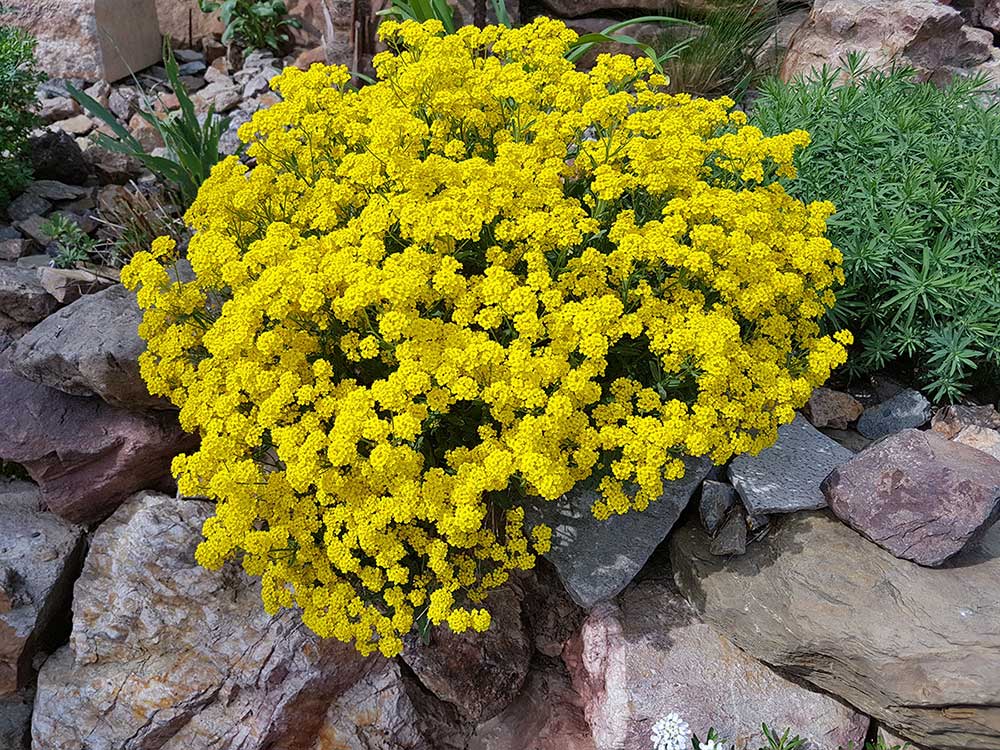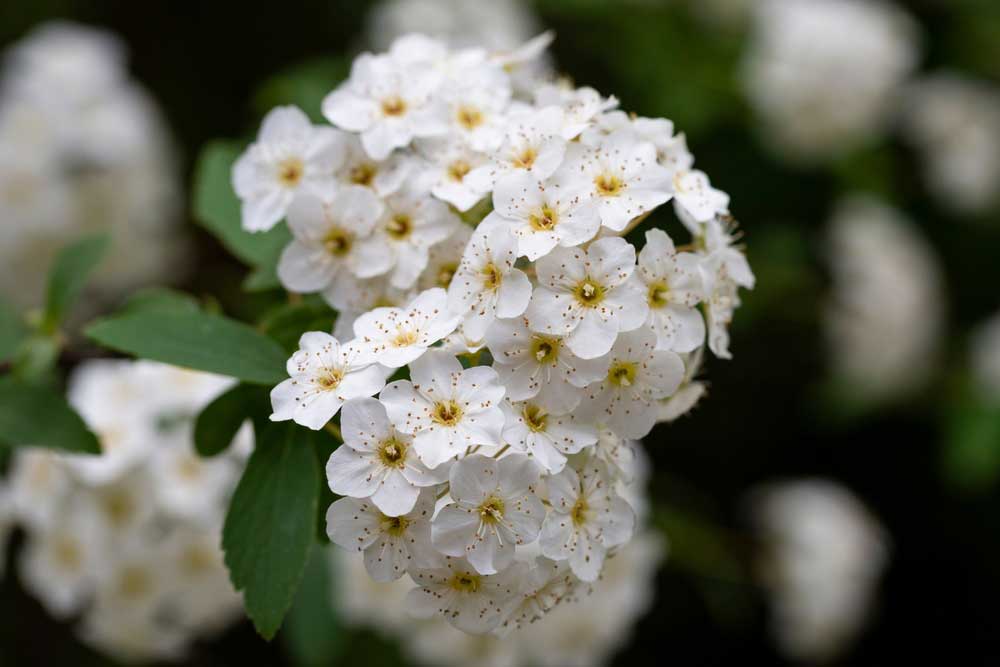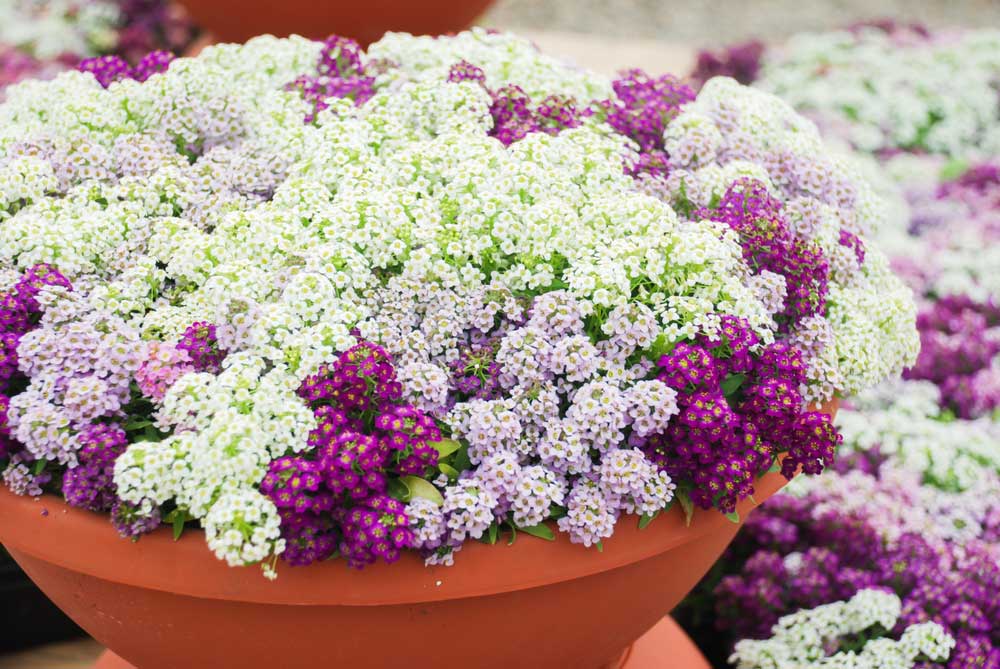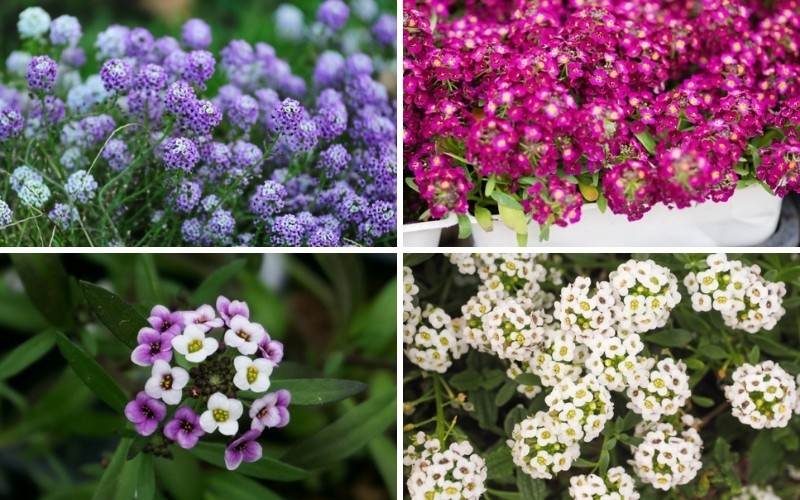
Alyssum is a tender perennial grown as an annual in much of the U.S. This delightful little plant produces clouds of delicate flowers with a sweet honey-like fragrance. While white is the most common flower color, some varieties produce lovely shades of purple, pink, and even red blooms.
It can be used as a bedding plant in flowerbeds to create waves of color but is most often used in window boxes and hanging baskets.
Plant alyssum in a sunny location in well-drained soil, and it will produce an abundance of cloud-like flowers all summer and into the fall.
| Botanical Name: | Lobularia maritima |
| Common Name(s): | Alyssum, Sweet Alyssum, Sweet Alison |
| Plant Type: | Annual / Tender Perennial |
| Mature Size: | 2 – 12″ tall, 8- 12″ spread |
| Sun Exposure: | full sun/ Partial Shade |
| Water Needs: | Moderate |
| Soil Type: | humus-rich, well-drained |
| Soil pH: | 6.0 to 7.0 |
| Bloom Time: | summer through fall |
| Maintenance: | Low |
| Flower Color: | white, yellow, pink, purple |
| Hardiness Zones: | 7-10 |
| Toxicity: | Non-Toxic |
Light
Plant alyssum in an area that receives direct sunlight for 6 to 8 hours a day. Although it will grow in less light, blooming may be inhibited in low-light conditions. Morning light from the east is preferred. Direct sun in the afternoon, when the sun’s rays are the strongest, may stress your alyssum plants. If you must plant them in a location that receives direct sun in the afternoon, monitor them for drying and water them frequently.

Water
Alyssum loves evenly moist soil but is prone to root rot in soggy soil. It will thrive with one to two inches of rain a week when grown in the ground. Potted alyssum may need frequent water, especially in mid-summer when it is hot and dry.
Water alyssum in pots or containers when the top 2 to 3 inches of soil is dry. Water until water runs freely through the bottom of the pot. You may need to water them daily during hot spells. Always check the soil to determine if your alyssum needs watering.
Temperature & Humidity
Alyssum is tolerant of outside temperatures and adapts to changes in the weather. However, it can suffer when the temperatures soar if the soil dries out excessively. With regular watering, your alyssum will perform well all summer.
Soil
Alyssum does best in slightly acidic, well-drained soil with a pH between 6.0 and 7.0. While it prefers humus-rich soil, it will grow in poor soil, too. It is best to amend the soil in your garden with compost or well-rotted manure in the spring before planting alyssum.
Container-grown alyssum needs soil that drains well but retains some moisture. A mixture of equal parts potting soil, peat moss, and perlite makes a lightweight soil for containers that drains well without drying out excessively. You can replace the potting soil with compost if preferred.
Fertilizer
Fertilizing the soil with a balanced granular fertilizer and working it into the existing soil in the spring gets your alyssum off to a good start. You can also use water-soluble fertilizer once a month during the summer to boost growth and encourage blooming.
Is alyssum toxic?
Alyssum is safe for both pets and humans. It is not toxic. In fact, the flowers are edible and can be used as a garnish or added to salads.
Potting and Repotting

Typically, alyssum is potted in containers, window boxes, or hanging baskets in the spring or early summer. This serves as the permanent home for this hardy little annual. It does not need to be repotted unless you decide to move it to a new container.
Use a lightweight potting mixture, such as equal parts potting soil, peat moss, and perlite, in containers before planting alyssum. This potting mix keeps the roots aerated and promotes good drainage. It is also lightweight, making it easier to move pots or hanging baskets when needed.
Deadheading and Pruning
Trimming off faded blooms will encourage repeat blooming and keep your alyssum looking good. Sometimes, especially during hot, dry spells in midsummer, your alyssum plants can become scraggly and cease blooming. When this happens, sheer the plant back by one-third. This encourages branching and blooming. Your alyssum plants should revive within a week or two.
Frequently Asked Questions:
Is Alyssum deer Resistant?
Alyssum is deer and rabbit-resistant. In fact, alyssum can work as a rabbit repellent, keeping them away from your flower garden.
Is alyssum toxic to dogs?
Alyssum is non-toxic to dogs, cats, and humans. It is safe for pets and small children.
Is sweet alyssum invasive?
Sweet alyssum is typically grown as an annual in temperate regions. However, it can be invasive when grown in the soil in warmer climates, says Gardenia Creating Gardens.





